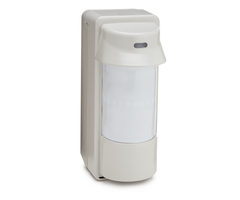Do Animals Set Off Outdoor Motion Detectors?
Yes, animals do set off outdoor motion detectors. However, this will only happen if the sensor is sensitive enough to be activated by animals. For that reason, an outdoor motion detector should have its sensitivity setting adjusted so that it will not be activated by a passing animal.
Most outdoor motion detectors use passive infrared (PIR) technology to detect the presence of motion. This works by having the device look for variations in infrared energy. If a significant change in infrared energy is detected, the device will assume an intruder is present, and it will send a signal to the alarm system. Since a moving animal will cause a change in infrared energy, it is possible for an animal to activate a motion detector.
However, the motion detector will only activate if the change in infrared energy is large enough. A detector that is less sensitive will require a greater change in infrared energy before it will activate. Most outdoor motion detectors can have their sensitivity levels adjusted by increasing or decreasing their pulse counts. Increasing the pulse count on a motion detector will make the device less sensitive, while decreasing the pulse count will make it more sensitive.
When considering the pulse count on a motion detector, it's helpful to think as though the motion detector is seeing its environment in the form of a grid. With a lower pulse count, fewer spaces within this grid will need to sense a change in infrared energy for the sensor to activate. But with a higher pulse count, a greater number of spaces in the grid will need to detect a change in infrared energy for the sensor to trigger. If the motion sensor has a high pulse count and a small animal like a bird or a rabbit passes by the device, the sensor will not activate because the animal won't take up enough spaces in the sensor's "grid" of vision to cause an activation.
Many outdoor motions, such as the 5800PIR-OD also employ a dual detection pattern to avoid false alarms caused by animals. With the 5800PIR-OD, there is an upper and a lower sensing area. If only one of these areas is triggered, the motion will not indicate an alarm. The lower detection area length can be changed using a switch on the motion.

In addition to pulse count, there are other ways to adjust the scope of a motion sensor. This can include its mounting height and location and the type of lens that is used with the device. Users can also cover up a portion of the lens in order to restrict its field of vision. Please be aware that an animal will still be able to set off a motion detector if it gets very close to the sensor. For that reason, we generally recommend installing outdoor motion detectors high up where they won't be affected by ground animals that may get too close.
Did you find this answer useful?
We offer alarm monitoring as low as $10 / month
Click Here to Learn MoreRelated Products

Related Categories
- Answered
